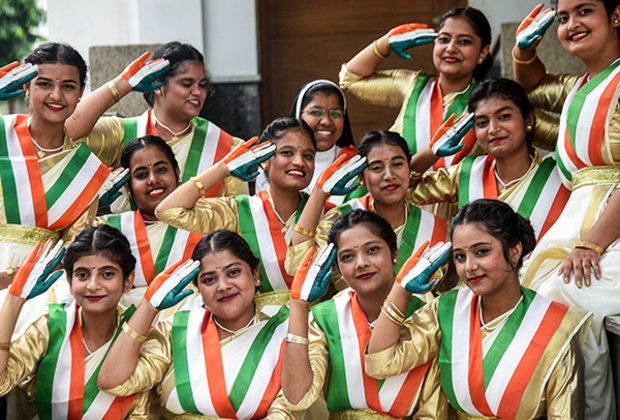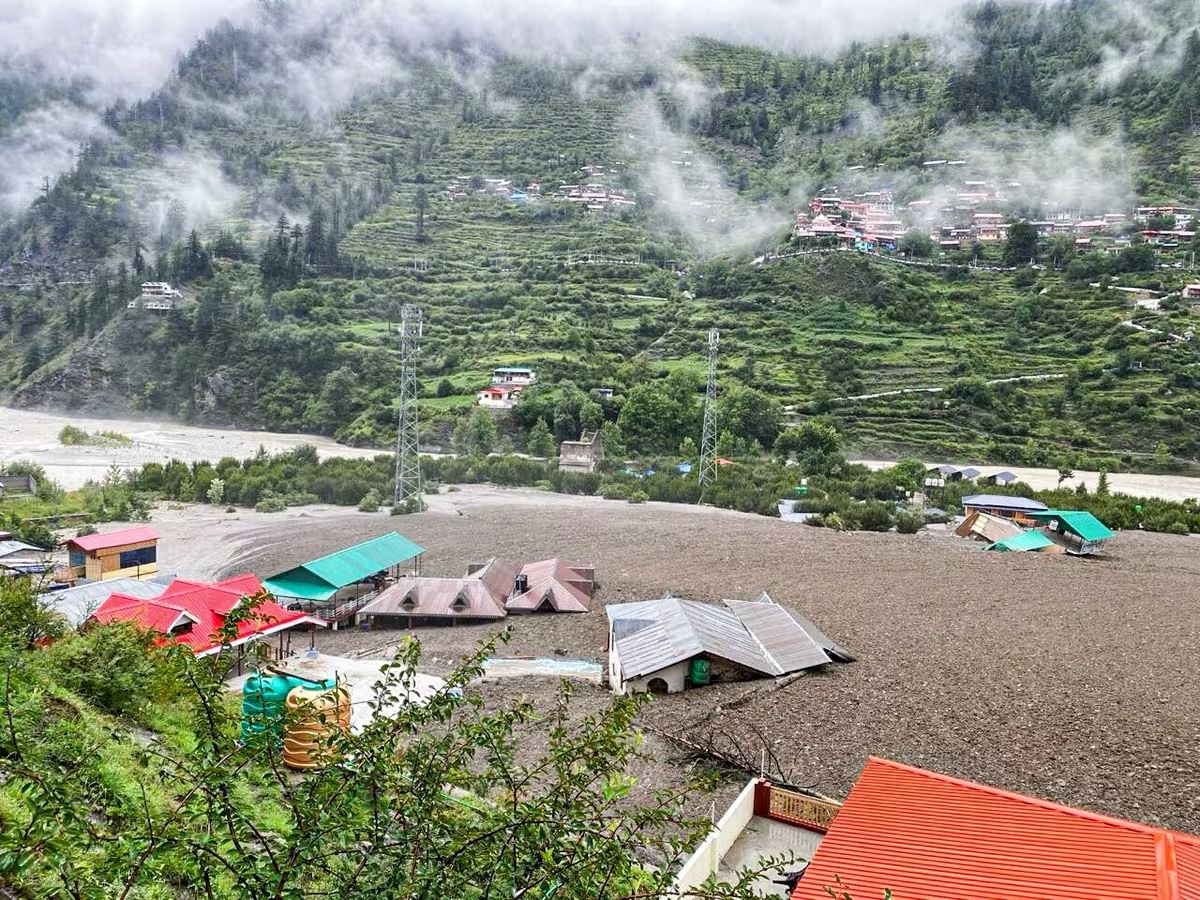A day that binds 1.4 billion hearts
India Independence Day is more than a date on the calendar; it is the yearly reminder that a people can turn hope into history and history into a living promise. On 15 August, homes glow with the tricolour, schoolyards echo with patriotic songs, and the Red Fort becomes a symbol of the nation’s resilient soul. India Independence Day calls us to look back with gratitude at those who sacrificed, and to look forward with courage at the work that remains. From quiet village lanes to sprawling megacities, India Independence Day invites every citizen to pause, reflect, and recommit to ideals that outlast every season and every political moment.
From struggle to sovereignty
India Independence Day commemorates the end of colonial rule and the beginning of self-governance, but the path to that dawn was long, diverse, and deeply human. Decades of petitions, protests, and people-powered movements converged into a chorus that no empire could ignore. India Independence Day carries echoes of nonviolent marches and quiet acts of defiance, of farmers and factory workers who believed their children deserved a freer world. The point was never only to change a flag; it was to change the future. India Independence Day, therefore, is not simply historical—it is a living, breathing reminder that ordinary citizens, organized around shared values, can create extraordinary change.
The meaning of the tricolour
India Independence Day places the tricolour at the center of our gaze: saffron for courage and sacrifice, white for peace and truth, and green for faith and fertility, all balanced by the Ashoka Chakra’s 24 spokes of duty in motion. On India Independence Day, the flag is not cloth alone; it is an ethical compass, a compact between generations. Children who paint it on their cheeks, artisans who weave it with care, and soldiers who salute it at dawn all share in a single promise. India Independence Day reminds us that a flag’s colours grow brighter only when citizens practice the virtues they symbolize.
Voices that shaped a nation
India Independence Day sits atop a foundation laid by thinkers, organizers, and everyday patriots who turned ideas into action. Names large and small tell a single story: that moral courage can outlast coercive force. India Independence Day invites us to read speeches with fresh eyes and to hear songs with attentive ears, not as relics but as roadmaps. When we teach children about the struggle, India Independence Day becomes a classroom of character; when we speak about empathy and inclusion, it becomes a workshop of citizenship. The best tribute is to live the values those voices taught: truth, nonviolence, dignity, and unity in diversity.
The midnight that changed the morning
India Independence Day remembers a midnight when the clock ticked into freedom and a new morning rose across the subcontinent. That moment was as fragile as it was magnificent, as complex as it was celebratory. India Independence Day recognizes both the joy of liberation and the responsibility that followed: to govern wisely, heal wounds, and build institutions that protect rights. The challenge was never merely to gain power; it was to give power shape and purpose. India Independence Day thus points to the brave work of writing a constitution, holding elections, and nurturing a democratic culture that includes the last person in the last village.
The Red Fort ceremony and its symbolism
India Independence Day is annually marked by the flag hoisting at the Red Fort, a ritual that blends continuity with renewal. As the tricolour rises, the nation listens—students, soldiers, nurses, scientists, farmers—each bringing their own dreams to the morning air. India Independence Day makes that ceremony more than protocol; it is a public reflection on progress and a public promise to correct course where needed. The salutes, the bands, the cadence of the address: these are not mere theatrics but civic grammar, reminding us that India Independence Day is at once a celebration and a civics lesson written in collective rhythm.
Schoolyards, small towns, and citizen pride
India Independence Day is felt most intimately where people gather in simple ways: morning assemblies, street parades, kite-flying on rooftops, and community clean-ups. In small towns, schoolchildren rehearse skits about freedom and responsibility; in urban colonies, folks share sweets and stories across balconies. India Independence Day helps neighbors become fellow citizens and strangers become partners in a shared project. The genius of the day is its accessibility—you don’t need a podium to participate, only a willingness to reflect and contribute. India Independence Day is strongest when it’s local, when it encourages service in the very places we call home.
The Constitution as a living promise
India Independence Day naturally turns our attention to the Constitution, a document that channels our differences into a democratic dialogue. Rights to speak, worship, assemble, and seek justice are not abstract gifts; they are daily disciplines. India Independence Day reminds us that constitutions breathe through courts, classrooms, and conversations around kitchen tables. The rule of law is not a slogan but a habit. India Independence Day asks citizens to know their rights and to honour their responsibilities, because liberty without responsibility frays, and responsibility without liberty hardens. The balance—maintained by people and institutions—is the everyday miracle of a republic.
Diversity as destiny
India Independence Day highlights a truth we often take for granted: unity does not require uniformity. Across languages, cuisines, and customs, there is a quietly shared ethic of hospitality and pluralism. India Independence Day offers a national stage to folk dances and regional music, to tribal art and classical forms, to regional cuisines that speak history through spice. Diversity is not a challenge to be managed; it is a strength to be magnified. India Independence Day therefore urges respect across differences and curiosity across cultures, because understanding is the shortest bridge to national harmony and sustainable progress.
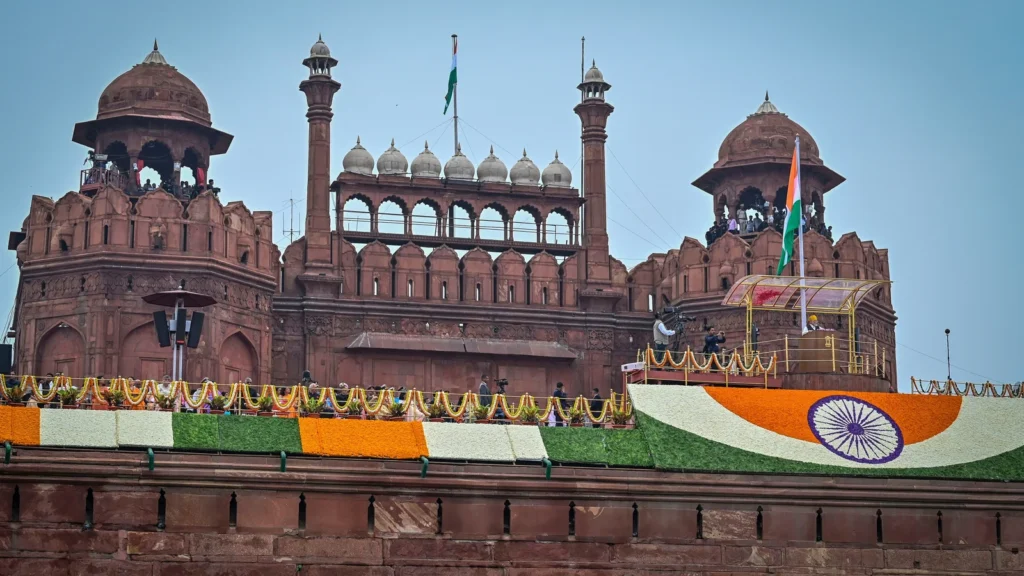
Women and the making of freedom
India Independence Day is also the story of women—organizers, writers, nurses, couriers, leaders—who risked much and won little recognition in their time. They built relief networks, sustained boycotts, edited journals, and kept families afloat amid uncertainty. India Independence Day shines when we tell their stories with clarity and pride, ensuring that textbooks and town squares remember courage in all its forms. Empowering girls to lead is not a modern add-on; it is a continuation of unfinished work. India Independence Day keeps us honest about the past and focused on a future in which equal dignity becomes an unquestioned baseline.
Science, innovation, and self-reliance
India Independence Day is a salute not only to political freedom but also to scientific ambition. From rural irrigation projects to space exploration, a spirit of inquiry knits the nation’s aspirations together. India Independence Day celebrates the laboratories where young minds turn questions into prototypes and prototypes into public good. Whether in telemedicine, clean energy, or digital public infrastructure, the ideal is the same: make technology a bridge, not a barrier. India Independence Day reminds innovators that true progress is measured not by patents alone but by the number of lives lifted and the communities strengthened by human-centered design.
Rural India’s quiet revolutions
India Independence Day resonates in the countryside, where cooperatives, self-help groups, and farmer-led innovations continue to reshape livelihoods. A new irrigation technique, a more resilient seed, a digital marketplace—these can change a family’s future as surely as a policy speech. India Independence Day is about the harvesting of dignity as much as the sowing of grain. When village councils deliberate transparently and young women start micro-enterprises, India Independence Day turns from symbol to sustenance. The call is to ensure that opportunity doesn’t end at the city limits, because a republic’s strength is measured by the breadth of its hope.
Youth as torchbearers
India Independence Day speaks most directly to the young, who inherit both a nation and a narrative. The story is unfinished by design; each generation edits the next chapter. India Independence Day, therefore, urges students to ask hard questions, to build with empathy, and to define success beyond personal gain. Volunteerism, climate action, entrepreneurship, and research are not extracurricular—they are the curriculum of citizenship. India Independence Day invites the youth to see themselves as co-authors of the national project, where exams matter but experiences matter more, and where integrity is the most portable credential they’ll ever carry.
The arts: memory set to melody
India Independence Day is carried by songs, poems, paintings, and films that keep memory alive in language the heart understands. Patriotic melodies renew themselves with every generation, and new voices remix tradition with contemporary rhythms. India Independence Day flourishes when artists feel free to explore nuance—celebrating victories while acknowledging pain, honoring heroes while humanizing dissent. Art doesn’t just decorate the day; it interprets it, ensuring that India Independence Day remains inclusive, reflective, and emotionally true. In galleries and on street corners, the arts remind us that freedom’s most beautiful expression is the courage to create.
Entrepreneurs and the economic horizon
India Independence Day also frames the story of economic inclusion—jobs created, supply chains built, and small businesses digitized. For street vendors, startups, and family firms alike, opportunity is the oxygen of dignity. India Independence Day urges policy to be people-centric: cut friction, widen credit, nurture skills, and open doors for those who’ve long stood outside the formal economy. Competitiveness with compassion is not a contradiction; it’s the cornerstone of sustainable growth. India Independence Day calls on business leaders to remember that the health of the marketplace is measured by the health of the communities it serves.
Public health as patriotism
India Independence Day has taught us that caring for one another is a civic act. From vaccination drives to rural clinics, health systems are strongest when trust runs high and data guides decisions. India Independence Day encourages a culture where prevention matters, mental health is destigmatized, and frontline workers receive both equipment and appreciation. A nation that breathes together heals together. India Independence Day frames public health not as a cost center but as a foundation for productivity, learning, and family stability—an investment that compounds across generations and allows dreams to survive the unpredictability of life.
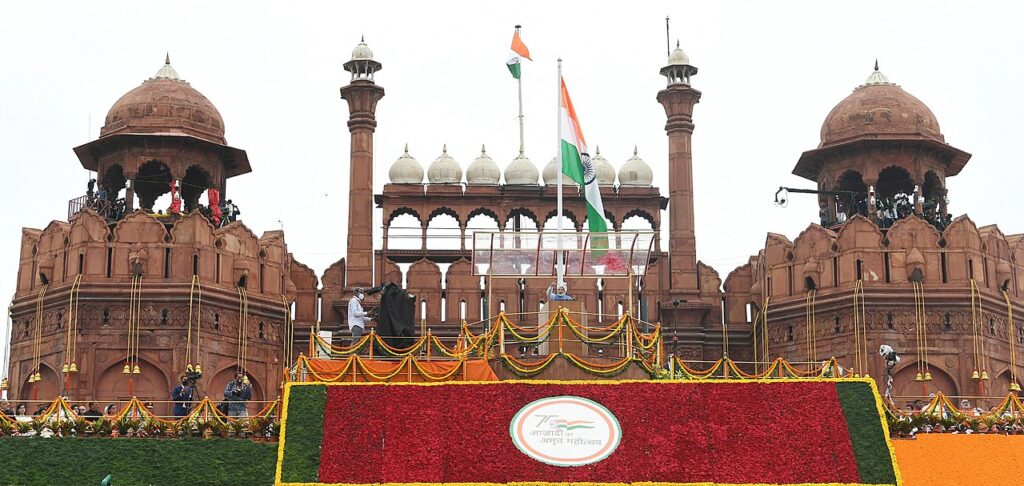
Environment and the ethics of tomorrow
India Independence Day asks us to think generationally about land, water, and air. Stewardship is a moral inheritance; today’s choices write tomorrow’s climate. India Independence Day connects urban clean-ups and rural watershed work, mangrove restoration and waste segregation, green transport and energy efficiency. The targets may be technical, but the mindset is ethical: leave the campsite better than you found it. India Independence Day is when citizens pledge to plant trees, conserve water, and protect biodiversity not for applause but for posterity. A nation is truly free when it can guarantee its children a sky worth seeing.
Digital public infrastructure and inclusion
India Independence Day arrives in an era where identity, payments, and services flow across secure digital rails. When technology is interoperable and accessible, the smallest entrepreneur can transact with confidence and the poorest household can access benefits without middlemen. India Independence Day situates these advances within a broader value: human dignity. Connectivity should translate into capability. India Independence Day is fulfilled when a widow receives her pension on time, a learner in a remote school joins a live class, or a patient consults a doctor without traveling a day. The measure of progress is the reach of justice.
Sports and the spirit of fair play
India Independence Day also celebrates the playing fields where grit meets grace. Athletes from villages and metros alike carry the tricolour into stadiums worldwide, showing what discipline and community support can achieve. India Independence Day reminds us that sport is more than medals; it’s mentorship, nutrition, and equal access. When girls find safe spaces to train and para-athletes get the facilities they deserve, India Independence Day turns ideals into infrastructure. The roar of a crowd at a local tournament tells the same story as a national anthem abroad: we are strongest when everyone gets a fair start.
Cities that work for people
India Independence Day brings into focus the everyday city—buses that arrive on time, sidewalks without obstacles, parks that welcome children and seniors. Urban planning is patriotism in slow motion. India Independence Day invites mayors, planners, and citizens to co-create neighbourhoods that are safe, green, and inclusive. Affordable housing, clean water, and resilient transit are not luxuries; they are rights that dignify the working day. India Independence Day is realized when the morning commute becomes less punishing, the air a little cleaner, and public spaces feel like living rooms for the community rather than corridors to hurry through.
Education as nation-building
India Independence Day is a reminder that schools and universities are factories of freedom. Literacy opens doors; critical thinking keeps them open. India Independence Day points to classrooms where teachers are supported, curricula are relevant, and every child—regardless of background—can dream with the tools to build. Skill labs, maker spaces, apprenticeships, and research ecosystems are bridges between learning and livelihood. India Independence Day recognizes that a nation’s best export is not a commodity but curiosity, and the best import is not goods but good ideas. Education isn’t preparation for life; it is life in rehearsal.
Diaspora: bridges across oceans
India Independence Day is celebrated wherever Indian hearts beat—from Silicon Valley to Singapore, from Nairobi to New York. The diaspora carries festivals and flavours, languages and lullabies, into new geographies while staying tethered to home. India Independence Day turns nostalgia into networks—of trade, technology, culture, and philanthropy. When overseas communities mentor startups, fund scholarships, or return with skills and investment, India Independence Day becomes a two-way conversation. Identity expands without erasing; belonging deepens without narrowing. This global embrace strengthens the republic’s resilience and multiplies opportunities for those still climbing the ladder at home.
Service: the simplest tribute
India Independence Day reaches its deepest meaning when citizens serve. A morning spent teaching at a shelter, an afternoon cleaning a lake, an evening visiting the elderly—these are patriotic acts. India Independence Day asks for no uniform to wear, only a willingness to roll up sleeves. Volunteering is not charity; it is partnership, eye-level and practical. India Independence Day has room for everyone: the coder who builds a neighbourhood app, the farmer who mentors younger hands, the nurse who trains first-aid teams. In the ledger of national progress, these are the entries that quietly change the balance.
Media, misinformation, and mindful citizenship
India Independence Day reminds us that freedom of expression thrives alongside responsibility for truth. In an age of speed, accuracy must not be an afterthought. India Independence Day invites citizens to read critically, verify before sharing, and support journalism that informs rather than inflames. Public debate should be spirited, not spiteful; disagreement should be reasoned, not reckless. India Independence Day thrives when ideas wrestle but people don’t. The health of our democracy depends on attention, patience, and the humility to learn. Civic literacy is the new common sense, and it is as patriotic as any parade.
Remembering the cost, honoring the courage
India Independence Day carries grief alongside pride—families separated by partition, lives lost to violence, dreams interrupted by history’s turbulence. To honor the past is to look at it fully. India Independence Day teaches that remembrance is not about blame; it is about learning. Memorials and museums, diaries and documentaries: these are tools for empathy. India Independence Day suggests we hold two truths together—that freedom was glorious and that it was costly. When we pause at ceremonies of silence, we promise those who suffered that their pain strengthened our resolve to build a kinder, fairer, and more just nation.
A future written together
India Independence Day is a bridge between “what was” and “what can be.” Tomorrow’s headlines are being drafted in today’s classrooms, labs, farms, factories, and living rooms. India Independence Day urges us to be impatient with injustice and patient with the work of change, to believe in compound progress where small steps, taken consistently, yield great distances. Every citizen can author this future—by voting, by volunteering, by learning, by building, by caring. India Independence Day is ultimately about agency: the belief that we are not passengers on a bus called history but drivers with our hands on the wheel.
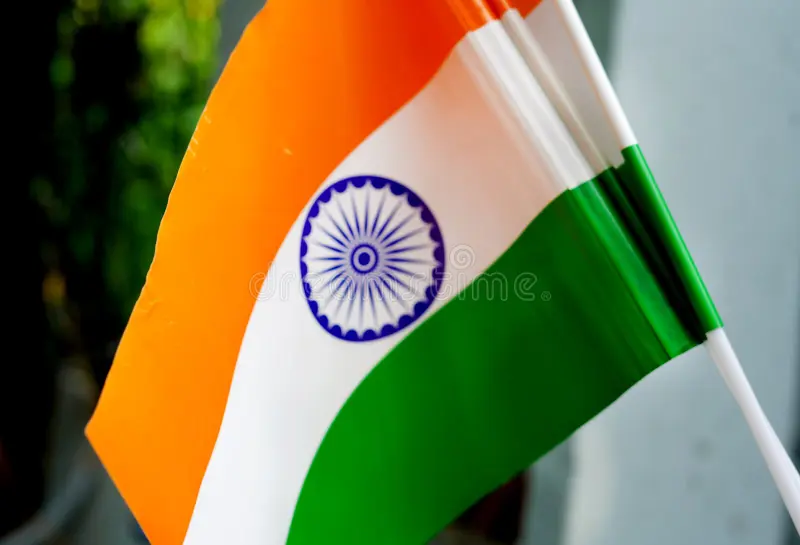
How to celebrate with depth and joy
India Independence Day is an opportunity to combine celebration with substance. Here are simple, meaningful ways to mark the day:
- Organize a neighbourhood clean-up and pledge to keep it going year-round.
- Sponsor a student’s books or mentor someone entering the workforce.
- Plant native trees and support local biodiversity efforts.
- Volunteer at a clinic, shelter, or old-age home for a day of service.
- Attend a local cultural performance to honour regional heritage.
India Independence Day shines brightest when joy meets responsibility. Flying a flag is beautiful; living its values is transformative. India Independence Day becomes truly ours when we translate patriotism into everyday habits that uplift those around us.
Patriotism without partisanship
India Independence Day is a reminder that love of country is broader than any election cycle. Patriotism is the steady work of improving institutions, supporting fair rules, and respecting the dignity of opponents. India Independence Day calls for dialogue across disagreement and for policies judged by outcomes rather than slogans. When public servants are accountable, when citizens participate constructively, and when disagreements remain civil, India Independence Day moves from a date to a durable disposition. Loving India means loving Indians—across languages, regions, faiths, and opinions—and committing to a future where everyone finds space to stand and to thrive.
The oath we renew
India Independence Day ends where it begins: with a pledge—spoken or silent—to do our part. The flag rises and falls with the fortunes of the people it represents, and the people rise and fall with one another. India Independence Day is the invitation to carry freedom into traffic jams and boardrooms, into kitchens and courtrooms, into fields and factories, into schools and streets. If we answer with integrity, kindness, and courage, India Independence Day will not just commemorate a past victory; it will inaugurate a daily practice. And in that practice, the republic will find both its strength and its song.
Quick Activities for Families and Classrooms
India Independence Day is perfect for small, memorable rituals that build civic muscle. Try these:
- Gratitude Tree: Write notes thanking people who serve the community—sweepers, teachers, nurses—and display them on a homemade “tree.”
- Flag Etiquette Minute: Teach how to respectfully display, fold, and store the tricolour.
- Local Heritage Walk: Visit a nearby historical spot or museum and discuss what it teaches.
- Civic Quiz Night: Host a quiz about rights, duties, and the Constitution.
- Service Jar: Pick one helpful act each week and do it together.
India Independence Day becomes a family tradition when shared experiences turn values into habits, and habits into character.
